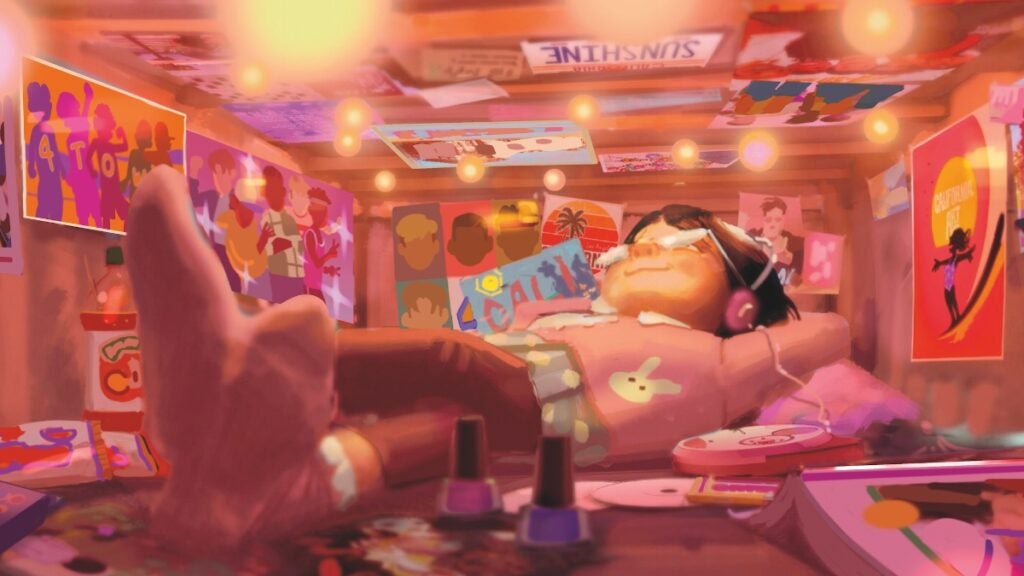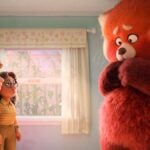Pixar’s “Turning Red” (which premieres exclusively on Disney+ March 11) is the tale of Mei (Rosalie Chiang), a precocious 13-yr-previous Chinese lady developing up in Toronto, Canada. If remaining a tween was not awkward more than enough, she finds herself reworking, when in a state of intense psychological distress, into a large purple panda. Contemplating your tween-to-teenager-a long time are practically nothing if not a sequence of highly psychological states, this triggers some sizeable issues. It is a Pixar movie that seems – and feels – rather various from anything the studio has created before.
TheWrap spoke to director Domee Shi (producing her element directorial debut right after her beloved short “Bao”) and producer Lindsey Collins (a longtime Pixar vet) about what it was like crafting this exceptional and irreverent movie. They talked about how they cracked the “Asian tween fever dream” aesthetic, how operating from property essentially heightened the artistic course of action and, of class, what it was like earning Pixar’s horniest film yet.

Domee, you described the movie as acquiring an “Asian tween fever dream” aesthetic. Can you converse about that afflicted the storytelling and how you made?
Domee Shi: Yeah. It all just came from our key character Mei Lee and just seeking to style the entire world by means of her eyes. And she is this bubbly, psyched, assured but super-dorky 13-yr-outdated Asian kid in Canada, and what does that glance like? What does her globe search like? We drew a large amount from our very own backgrounds, of escalating up loving anime, “Sailor Moon,” “Ranma ½” and just loving the tremendous vibrant smooth pastels of these reveals, and truly sensation like that captures the spirit of Mei. And attempting to like set that in the motion picture and seriously anytime Mei is feeling like an emotion like definitely, actually strongly, like she sees her crush and she melts, or she’s like tremendous ashamed and set below the spotlight. We really preferred the audience to come to feel what Mei’s emotion.
And which is a further factor that I adore about anime so substantially, is that there is so significantly expressiveness in how the figures act. And they really exaggerate the lights and the sets and everything frame to actually make us come to feel what people are emotion in that instant. That’s what we were being motivated by in making the look for “Turning Crimson.”

Lindsey, what was it like acquiring everyone on board, because it does experience and appears to be like very distinct in the greatest attainable way?
Lindsey Collins: Yeah. It does. And I believe what was very clear from the outset is that, there was a motivation to be extra stylized, be extra, a very little bit type of away from the regular form of glimpse of our movies. And that meant really in digicam, and in even the chopping sample, in the way the character breaks the fourth wall, all the way to the character models and the set layouts. It didn’t come to feel as however Domee was just like, all right, I just want to do like a look that’s distinctive. The full aesthetic of the movie that strike every solitary office was all holding hands and becoming like, Ok, we’re going to lean into this new way of form of producing this movie and acquiring it look distinct and actually come to feel different as you are viewing it.
The responsibility is across all the departments. There was a great deal of communication that had to take place – a great deal of exploration and a lot of appears to be assessments that we necessary to do in buy to make sure that we were all on the identical webpage. And then also we desired to obviously present that to Pete Docter and the rest of the studio, because it’s a single factor to chat about stylization, it’s one more factor to in fact execute it and present it and get acquire in. And Pete is known for seeking to force the boundaries of things. Anyway, the look of his movies have a tendency to be a little little bit far more stylized, so he was on board in idea for guaranteed. And then it was far more about displaying it to him in truth and being like, Alright, we however fantastic. And I believe everybody acquired in. Everyone experienced a genuine intention guiding it and I consider the studio was proper on board.
Was there a interval of demo and mistake?
Lindsey Collins: Ideal. Certainly.
Domee Shi: Yeah. We experienced time previously on in output to do appears to be like checks to see what do people exaggerated anime expressions glance like, how do we reach them in 3D? What does it glance like with the Asian teenager fever dream?What does that glimpse like for each individual office? It was just a lot of demo and mistake and then also exhibiting Pete and in some cases he’ll reel us back again if we go way too far for him. Also for me inevitably, I recognized stylization should really normally occur from a spot of supporting the character and the emotion in the scene. And there is that stage in which it gets to be nearly as well distracting or if you are noticing the type more than what’s basically going on on display screen, then possibly which is like a point to type of reel back. It just took a great deal of massaging and demo and error.

What is appealing also, is there is such grounded emotional territory underneath all of this. Was that always section of the style, exactly where it was looking heading to be these heightened visuals but feel quite genuine? I would argue perhaps the very first certainly horny Pixar movie. At the very least the horniest Pixar movie yet right?
Lindsey Collins: We back again that up, yeah.
Domee Shi: I imply, from the pretty starting we have been going to be exploring magical puberty and all of what that usually means. And I know for me, like I felt like I was not viewing a good deal in media at the time, the activities and emotions that I went by way of when I was that age. I’m seriously proud of the attractive drawing spiral scene in the movie where by Mei goes to her bed and goes outrageous. I certainly had many of individuals times in my everyday living and quite a few solution sketchbooks that I will melt away if I at any time find them all over again. I never know wherever I hid them in my parents’ residence. And I just imagined with this motion picture we could shed a light-weight on this facet of teen women that you do not genuinely see that we are, or I was just as uncomfortable and sweaty and lusty and excited as any of boy. And that’s a thing to rejoice and giggle at and cringe at.
There’s even a instant when Mei, as the raccoon, does this Tex Avery “a-oooga” at a lovable boy who will work at the comfort. You’ve hardly ever seriously observed that from a feminine character that I can think of. It is very groundbreaking.
Domee Shi: Which is so amusing to me because growing up me which is all me and my pals, that’s just us currently being ourselves. I experienced my squad of girlfriends where all we would do was just attract fairly boys all the time and trade drawings with just about every other. And it’s just some thing that was just in my everyday living that I imagined was a really humorous element to share with the world.
The other matter that struck me was, we at last get a Pixar film that acknowledges a title card. She interacts with the title card.
Domee Shi: Yeah. It fundamentally just came from me expanding up with a large amount of loved ones sitcoms and just becoming motivated by that, like “Clarissa Clarifies It All” or “Lizzie McGuire,” “Smart Guy,” “Sister, Sister.”
Lindsey Collins: She can hold heading.
Domee Shi: Yeah, I could retain going. And it’s also the period far too, our movie set in the early 2000s and I really feel like a title card with the major character dancing close to it feels extremely of that era of the 90s and early 2000s.
Lindsey Collins: We often like to like consider about if Mei have been like directing this due to the fact I sense like that full intro is like, she just, I imply the truth that she does introduce herself, like she seems ideal at the camera, she tells you who she is. Even from the music, we imagined about that in the rating and then also in the title sequence, if this were being Mei’s motion picture, how would she introduce herself and how would she perform this full opening sequence, because she’s the star of her possess display. We really leaned into that plan for that total opening title sequence.

Lindsey, could you talk about what the form of most difficult component of the creation was?
Lindsey Collins: I think the hardest portion truthfully was, and I truly feel like it’s type of predictable to say it, but it was correct, is taking what has this sort of a collaborative and lively setting that is Pixar and pulling the rug out from below that as we are heading into manufacturing on this film and most people heading dwelling, and primarily for Domee as a 1st time aspect film director. All of a sudden she went from remaining surrounded by persons walking close to and obtaining an possibility to check with queries or get reassured or have a instant to be like, you fellas I’m freaking out about that shot that we just observed, that all just obtained immediately stripped away.
It in the beginning was this concern of, can we truly do a collaboration – is this film likely to endure from a deficiency of collaboration staying that we’re all at home. And I consider in a odd way, and I never know, it’s like that bizarre instant of like, wow. First of all, the crew on the film and the leadership on the movie, in addition to what this movie was about in some approaches, it only lent by itself to this pandemic in the feeling that everybody’s people and mess were being right guiding them through this full approach, like youngsters have been coming in. And I know I still left my AirPods on as I was screaming at my teenage kids and like I arrive again and Domee’s like, “Yeah, we all just heard that.” The times of revealing, uncooked shame and just exhaustion and failure, like the mess that was this past calendar year and a 50 percent for all of us in a weird way lent itself totally to the topic of this film and there was just no hiding.
I signify, we ended up all out there and uncovered in our messy life and in just about every other’s lives by definition of Zoom. I do assume whilst it was truly challenging, I imagine weirdly one thing arrived out of it that authorized everyone to fall any perception of obstacles or hiding. It was just, everyone ended up staying really, seriously vulnerable and authentic with each other in the course of this total detail. I really don’t know, it’s possible it really helped with the building of it in some strategies.
Can you converse a tiny bit about the all-woman leadership workforce on this motion picture and what that expertise was like for you?
Domee Shi: Yeah. It was so great in that, we previously had this designed-in shorthand of conversing about difficulties that a 13-year-old woman would offer with. Like a large amount of us have like have had that working experience. And I know doing work with Julia Cho, our screenwriter. Story sessions would just be the two of us buying and selling hilarious/traumatic tales about our personal childhood and our associations with our mothers.
And it was wonderful mainly because like we normally had this library of private activities to attract from and put in the motion picture and also doing the job with Rona Liu our manufacturing designer… I worked with her on “Bao” and for “Turning Red” yet again, it’s that shorthand of like oh, I do not need to reveal what a Chinese household looks like or what an Asian kid’s room would glance like in the early-2000s, for the reason that she had that reference in her head. I understood she could get people aspects correct away. And that was seriously brilliant and refreshing. It intended that we could perform faster too. I cherished it.
Lindsey Collins: It just experienced this typical experience. And I mean that in the feeling of, it just allowed us to be bolder I imagine, due to the fact we weren’t hesitating internally with any of the selections we have been building. This is this kind of a long method and we exhibit it so several occasions, it is so iterative that even the most effective of intentions can direct to it receiving watered down mainly because folks are giving notes and you are starting up to next guess the choices you’re generating as a filmmaker.
But when you are able to get internally, everybody’s on board and is like, yeah, yeah, yeah, no, that is amusing. Hold it in. No, I know it is awkward, but it’s amusing. Preserve it in. By the time we shared it to the much larger studio, we had been self-assured in those choices and in these selections this kind of that it, I assume, landed on the display screen so close, if not better than the place Domee commenced with it.
“Turning Red” is on Disney+ on March 11.